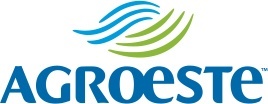
To ensure retainage works for you, it is vital to negotiate the terms and ensure that the contract is transparent and leaves no room for interpretation, especially when it comes to the definition of the project’s completion. While retainage construction has its advantages, it can also introduce potential risks. Delayed payments can lead to cash flow disruption, and disputes may occur over the quality or completion of work. When you think about the typical structure of a construction project, the customer is at the top, with a general contractor next, then a certain number of subcontractors and specialists. Hopefully you followed best practices around withholding a percentage of the full invoice amount. Contractors must familiarize themselves with state-specific retainage laws and adhere to their requirements.
- Many construction companies, especially small businesses, are working with small accounting departments, or absorb accounting responsibilities into other roles.
- If you don’t manage your project properly on both the AR and AP sides, you could easily wind up with negative cash flow.
- Retainage payable serves as a valuable tool for managing risk and ensuring project completion to satisfactory standards.
- Recording and tracking retainage can seem confusing at first, but here’s a quick breakdown of what you need to know.
- The careful management of retainage is essential to maintaining a healthy cash flow and ensuring compliance with relevant accounting standards.
- One possible solution would be to allow the use of historical cost to estimate credit losses, without the evaluation of reasonable and supportable forecasts.
- Expand your network and connect with general contractors, subcontractors, owners, architects, and suppliers – not to mention thousands of relevant projects at your fingertips.
Legal Limitations on State/County or Municipal Public Works Projects
The legal translation of that is, the Contracting Officer has complete discretion to decide whether or not to withhold retainage based on their assessment of past performance and likelihood of continuing performance. Every construction project — whether it’s a residential home, a commercial building, or a major infrastructure development — depends on a detailed set of documents to guide the construction process… However, the most important thing governing the use of retainage on a project is always going to be the contract between the owner and the general contractor, or that between the contractor and the subcontractor. In the high-stakes world of construction finance, there are various arrangements and payment mechanisms that are specific to the industry. These two terms are often used interchangeably, but in certain cases the terms retainage and retention have different meanings.
Are there any risks associated with paying retainage?

This account is commonly called Retainage Receivable, Retention Receivable, or Accounts Receivable — Retention.You can name your accounts however you like, but make sure it’s recognizable to everyone on the accounting team. The Chart of Accounts is the backbone of a contractor’s accounting system, and contains a list of all the accounts used to categorize transactions. These accounts are used to build the Balance Sheet (where Retainage Receivable will be reported) and the Profit and Loss Statement. Don’t miss out on the latest construction industry news and subcontractor guides.
CFMA Says Owners Are Shifting Financial Risks Down The Contracting Chain
At the end of the project, when you’re certain all the work has been done and done correctly, you release 5% of that in payment to the subcontractor. Then you could release the remaining 5% at a later designated time or possibly at the end of any warranty period. Retainage amounts are usually a percentage of the contract value, commonly ranging from 5% to 10%. This percentage is predetermined in the construction contract and applied to each progress payment throughout the project’s duration. An alternative to both traditional retainage and retention bonds is the use of a letter of credit.
Recording & Tracking Retainage Receivable: QuickBooks for Contractors
Retainage payable, also known as retention, is a portion of the contract amount that is withheld by the customer until the completion of a project or delivery of goods or services. It serves as a form of security for the customer to ensure that the contractor or supplier fulfills their obligations. Retainage is deeply intertwined with contractual obligations, serving as a mechanism to ensure that all parties adhere to the terms of the contract. The inclusion of retainage clauses in contracts provides a financial incentive for contractors to complete projects to the specified standards and within the agreed-upon timeline. This can be particularly important in large-scale projects where the risk of defects or incomplete work is higher. Clear and detailed retainage clauses help set expectations and provide a framework for resolving disputes, thereby fostering a collaborative working environment.
Timely Release Requests

For in-scope companies, IFRS 19 simplifies disclosures on various topics, including leases, exchange rates, income taxes, statement of cash flows, etc. Learn from Breakthrough Academy how to truly understand your construction company’s financial statements and budget the way your accountant does … well close. While revenue recognition and retainage retainage in construction impact when a company can record revenue, billing refers to when a home buyer receives invoices. Many construction companies, especially small businesses, are working with small accounting departments, or absorb accounting responsibilities into other roles. Labor costs tend to be the biggest expense for many construction companies.
On the other hand, ‘retention’ refers to any case where the project owner withholds money for purposes beyond quality assurance. In any contract, payment terms should be negotiated so that there’s crystal clarity for all parties. Construction companies are very familiar with payment disputes and the delays they cause.
Alternatives to Retainage
Accurate financial reporting for retainage is essential for maintaining transparency and ensuring compliance with accounting standards. Retainage must be clearly reflected on financial statements to provide a true picture of a company’s financial position. This involves recording retainage as a liability on the balance sheet, representing the amount owed to contractors or subcontractors but not yet paid.
When an invoice is recorded, the retention will go to this account, with the balance going to Accounts Receivable. Generally, withholding retention flows down through a project’s contracts. Despite the established practices, organizations often need help with retainage accounting that can impact cash flow, project delivery, and relationships with project partners. In this comprehensive guide, we have demystified the concept of retainage payable for accounting and procurement professionals. We have explored what retainage payable is, how it is calculated, and how it should be recorded in financial statements following GAAP guidelines.
Pricing for General Contractors
Retainage, also referred to as a “hold back,” helps the owner ensure a contractor sufficiently completes the project, and that the work meets with their approval and terms of the contract. It also provides a financial incentive for the contractor to see the project through to its successful finish. Withheld funds act as a safeguard for everyone involved in the project, from the owner on down through subcontractors and suppliers. This is especially true because the rules are very specific and vary from state-to-state and job-to-job. Small mistakes can put your company at risk for withholding money improperly, or for losing out on being able to ever get your withheld funds! These frequently asked questions address common issues that you’ll encounter when trying to stay ahead with the game.

Deixar Um Comentário